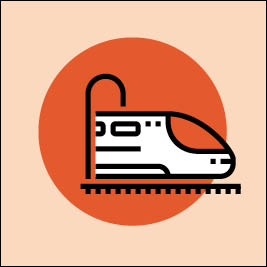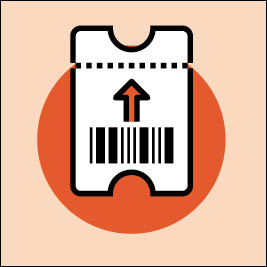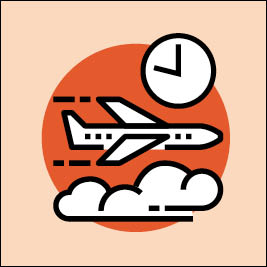There’s an easy way to start a conversation with a customer experience (CX) professional. Just ask them about their last horrible experience. They’ll reel off a treasure trove of horrible interactions. From borked websites to ghastly shopping experiences, it’s a core part of the job to catalogue awful moments.
Spotting screw-ups helps CX practitioners to learn. Which raises the question of whether there’s an exhaustive list of the causes of CX errors. Psychologists can turn to the Diagnostic and Statistical Manual of Mental Disorders for a definition of maladies. What’s out there for CX?
Celebrity marketer Seth Godin had a crack at defining categories. In a smash-hit TED talk, he narrates his experience of running a blog called This Is Broken, which chronicles bad customer experiences. He rattles off examples of poor CX.
There’s the New York City ferry Miss New Jersey, which prompts worried passengers to ask if they are heading for New Jersey (they aren’t). A bank app asks customers “Do you really want to cancel this payment”, offering “OK” and “Cancel” as the options. Which do you hit? There’s a pen with a blue cap, blue decoration and a blue end, but has black ink.
What caused these errors? Mr Godin identifies seven causes of broken experiences:
01. Not my job. An example is a rubbish bin in the men’s room at the US Museum of Natural History always overflows with paper towels, littering the floor. The solution is to buy a bigger bin. Yet the person whose job it is to pick up the paper towels lacks the authority to buy it. And the person who procures bins for the museum doesn’t pick up litter. Not their job. So the experience stays broken.
02. Selfish jerks. Sheer thoughtlessness can cause CX malfunctions. Spam marketing e-mails can tarnish the reputation of a brand. So why send them? Because the marketer is a selfish jerk. They want to generate a few quid in short-term revenue, annoying thousands of customers, because they don’t care about the long term.
03. The world changed. Out-of-date websites exemplify this. They worked, then the world moved on.
04. I didn’t know. Ignorance can be the culprit. A chef using Worcestershire sauce in a vegan dish isn’t malicious. He just doesn’t know it contains anchovies.
05. I’m not a fish. Mr Godin’s favourite category. He points to a flow pipe in a salmon river positioned three feet too high. The engineer isn’t a salmon. He has no idea how high the fish leap. Well, not that high is the answer. The fish get stuck. Many CX projects also fail because designers can’t see things from the users’ perspective.
06. Contradictions. The user is misled. For example, that blue pen with black ink.
07. Broken on purpose. Some experiences alienate the majority, but are designed to. That’s OK. Ripped jeans are meant to be ripped, to make a fashion statement. For some customers that’s bad, for others highly desirable. A reminder that experiences are subjective.
Is the list exhaustive? Mr Godin says not. Indeed, ask a CX professional and they’ll throw out many other reasons an experience can go wrong.
Ian Wood, senior partner at creative consultancy Lippincott, says a fear of doing the wrong thing leads to bland services. “Companies seek to iron out jarring elements of the experience thereby driving their brand experience into convergence with their competitors,” he says. “This is particularly true in low-touch, low-engagement categories such as banking, utilities, mobile service provision.”
Poor data-gathering is a common cause. Peter Linas, international managing director at customer relationship management software makers Bullhorn, points to net promoter score (NPS) as a key culprit.
“When someone asks you what the weather is like, you don’t just say 27 degrees. Yes, you assess temperature, but then there’s cloud cover, wind speed, rain, humidity and many other factors to consider,” he says.
“The same applies to customer satisfaction. NPS is the temperature, but then there are factors such as customer churn, propensity to buy from you again and responsiveness, to name a few.” Without the right data, you can’t identify problems.
There are many other causes. Maybe one day a brave soul will identify all the origins of poor CX. Then we’ll be free to live in a world without overflowing bins and impossible-to-use banking apps.
THREE NAMED AND SHAMED
01. Misleading ticket sales at Euston Station
 In the main ticket hall at London’s Euston Station stand two dozen touchscreen ticket kiosks. All are red, except two green ones. The problem is that the green kiosks have the Silverlink livery, the red ones that of Virgin Trains. Naturally, passengers assume it is necessary to queue at different kiosks for different trains. Long queues form each day at the green kiosks, pointlessly, as the machines are in fact the same. Thus everyday passengers miss their train queuing for a ticket due to a misleading colour scheme.
In the main ticket hall at London’s Euston Station stand two dozen touchscreen ticket kiosks. All are red, except two green ones. The problem is that the green kiosks have the Silverlink livery, the red ones that of Virgin Trains. Naturally, passengers assume it is necessary to queue at different kiosks for different trains. Long queues form each day at the green kiosks, pointlessly, as the machines are in fact the same. Thus everyday passengers miss their train queuing for a ticket due to a misleading colour scheme.
02. Baffling ticket policies in Florence
 It’s summer, so the Italian city of Florence is awash with tourists headed for the Uffizi and Accademia galleries. The two are so popular it’s necessary to book online and here is where the mayhem starts. Visitors must first navigate past multiple “copycat” websites to avoid getting ripped off. When booked, a barcode is e-mailed. But is this a ticket? In fact the barcode must be converted into paper tickets at a booth near the gallery entrance. The result: swarms of baffled tourists wave paper barcodes at annoyed gallery officials each and every day throughout the summer.
It’s summer, so the Italian city of Florence is awash with tourists headed for the Uffizi and Accademia galleries. The two are so popular it’s necessary to book online and here is where the mayhem starts. Visitors must first navigate past multiple “copycat” websites to avoid getting ripped off. When booked, a barcode is e-mailed. But is this a ticket? In fact the barcode must be converted into paper tickets at a booth near the gallery entrance. The result: swarms of baffled tourists wave paper barcodes at annoyed gallery officials each and every day throughout the summer.
03. Heathrow Terminal 5 check-in
 Television presenter Phillip Schofield lost his temper in mid-July after missing his flight due to a British Airways check-in meltdown at Heathrow. “Plane leaves in half an hour, been in the queue for two hours and not one member of staff to talk to. Love you usually, today you are s***.” He added: “There’s no announcements, no info when the planes left, no help at all. What are you upgrading to – Windows 2.1?” BA apologised, blaming a new system handling 700 flights a day: “It’s a big change for us.” A reminder that customer experience includes engineers and IT.
Television presenter Phillip Schofield lost his temper in mid-July after missing his flight due to a British Airways check-in meltdown at Heathrow. “Plane leaves in half an hour, been in the queue for two hours and not one member of staff to talk to. Love you usually, today you are s***.” He added: “There’s no announcements, no info when the planes left, no help at all. What are you upgrading to – Windows 2.1?” BA apologised, blaming a new system handling 700 flights a day: “It’s a big change for us.” A reminder that customer experience includes engineers and IT.
THREE NAMED AND SHAMED



